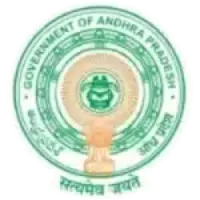Latest Applications Open 2024:
AP PGECET 2024 Chemical Engineering Syllabus has been Available now. The AP PGECET Chemical Engineering syllabus is a comprehensive guide that outlines the topics and subjects that aspiring candidates need to cover to excel in the AP PGECET exam in the field of Chemical Engineering. This syllabus serves as a roadmap for candidates, helping them prepare effectively and efficiently for this competitive examination.
The syllabus covers many topics, including core principles and advanced concepts in Chemical Engineering. It includes subjects such as Thermodynamics, Heat Transfer, Mass Transfer, Process Control, Chemical Reaction Engineering, and more. Understanding and mastering these subjects is essential for success in the exam and future academic pursuits.
Candidates are encouraged to refer to the official AP PGECET Chemical Engineering syllabus to ensure they are well-prepared for the exam. Additionally, using recommended textbooks and study materials can further enhance their readiness. By diligently studying the syllabus, candidates can confidently tackle the AP PGECET Chemical Engineering exam and strive for admission to esteemed institutions and opportunities for advanced studies.
AP PGECET 2024 Chemical Engineering Syllabus – Available
AP PGECET 2024 Chemical Engineering Syllabus has been Available now. Click to Download Syllabus PDF.
Engineering Mathematics
Engineering Mathematics is a fundamental branch of mathematics that plays a critical role in various engineering disciplines. It provides the mathematical foundation for solving complex engineering problems, modeling physical systems, and optimizing designs. Engineers rely on this branch of mathematics to analyze and understand the quantitative aspects of their work, making it an essential component of engineering education and practice.
Linear Algebra:
Matrix algebra, Systems of linear equations, Eigen values, and Eigen vectors.
Latest Applications For Various UG & PG Courses Open 2024
-
- Parul University | Admissions Open for All Courses 2024. Apply Now
- Chandigarh University | Admissions Open for All Courses 2024. Apply Now
- NIIT | Admissions Open for All Courses 2024. Apply Now
- KL University | Admissions Open for All Courses 2024. Apply Now
- Alliance UG | Admissions Open for All Courses 2024. Apply Now
- GD Goenka | Admissions Open for All Courses 2024. Apply Now
Calculus:
Functions of a single variable, Limit, continuity, and differentiability, Mean value theorems, Evaluation of
definite and improper integrals, Partial derivatives, Total derivative, Maxima and minima, Gradient, Divergence
and Curl, Vector densities, Directional derivatives, Line, Surface, and Volume integrals, Stokes, Gauss, and Green’s
theorems.
Differential equations:
First-order equations (linear and nonlinear), Higher order linear differential equations with
constant coefficients, Cauchy’s and Euler’s equations, Initial and boundary value problems, Laplace transforms,
Solutions of one-dimensional heat and wave equations and Laplace equation.
Complex variables: Analytic functions, Cauchy’s integral theorem, Taylor and Laurent series, Residue theorem.
Probability and Statistics:
Definitions of probability and sampling theorems, Conditional probability, Probability
Density Function, Mean, median, mode and standard deviation, Random variables, Exponential, Poisson, Normal, and Binomial distributions.
Numerical Methods:
Numerical solutions of linear and non-linear algebraic equations Integration by trapezoidal
and Simpson’s rule, single and multi-step methods for differential equations.
Chemical Engineering
Chemical Engineering is a multidisciplinary branch of engineering that combines principles of chemistry, physics, mathematics, biology, and economics to efficiently use, produce, design, transport, and transform energy and materials. This field plays a critical role in various industries, including pharmaceuticals, petrochemicals, environmental protection, and materials manufacturing. Chemical engineers apply their expertise to develop and optimize processes that involve chemical reactions and transformations, ensuring the safe and sustainable production of essential products for modern society.
Process Calculations and Thermodynamics:
Laws of conservation of mass and energy; use of tie components;
recycle, bypass, and purge calculations; degree of freedom analysis. First and Second laws of thermodynamics. First
law application to close and open systems. Second law and Entropy Thermodynamic properties of pure substances:
Equation of state and departure function, properties of mixtures: partial molar properties, fugacity, excess properties, and activity coefficients; phase equilibria, predicting VLE of systems; chemical reaction equilibria.
Fluid Mechanics and Mechanical Operations:
Fluid statics, Newtonian and non-Newtonian fluids, Bernoulli
equation, Macroscopic friction factors, energy balance, dimensional analysis, shell balances, flow-through pipeline
systems, flow meters, pumps and compressors, packed and fluidized beds, elementary boundary layer theory, size
reduction and size separation; free and hindered settling; centrifuge and cyclones; thickening and classification,
filtration, mixing, and agitation; conveying of solids.
Heat Transfer:
Conduction, convection and radiation, heat transfer coefficients, steady and unsteady heat
conduction, boiling, condensation, and evaporation; types of heat exchangers and evaporators and their design.
Mass Transfer:
Fick’s laws, molecular diffusion in fluids, mass transfer coefficients, film, penetration, and surface
renewal theories; momentum, heat, and mass transfer analogies; stage-wise and continuous contacting and stage efficiencies; HTU & NTU concepts design and operation of equipment for distillation, absorption, leaching, liquid-liquid extraction, drying, humidification, dehumidification, and adsorption.
Chemical Reaction Engineering:
Theories of reaction rates, kinetics of homogeneous reactions, interpretation of
kinetic data, single and multiple reactions in ideal reactors, non-ideal reactors; residence time distribution, single
parameter model; non-isothermal reactors; kinetics of heterogeneous catalytic reactions; diffusion effects in
catalysis.
Instrumentation and Process Control:
Measurement of process variables, sensors, transducers, and their
dynamics, transfer functions and dynamic responses of simple systems, process reaction curve, controller modes (P,
PI, and PID); control valves; analysis of closed-loop systems including stability, frequency response, and controller
tuning, cascade, and feed-forward control.
Latest Applications For Various UG & PG Courses Open 2024
-
- Parul University | Admissions Open for All Courses 2024. Apply Now
- Chandigarh University | Admissions Open for All Courses 2024. Apply Now
- NIIT | Admissions Open for All Courses 2024. Apply Now
- KL University | Admissions Open for All Courses 2024. Apply Now
- Alliance UG | Admissions Open for All Courses 2024. Apply Now
- GD Goenka | Admissions Open for All Courses 2024. Apply Now
Plant Design and Economics:
Process design and sizing of chemical engineering equipment such as compressors,
heat exchangers, multistage contactors; principles of process economics and cost estimation, including total
annualized cost, cost indexes, rate of return, payback period, discounted cash flow, and optimization in design.
Chemical Technology:
Inorganic chemical industries: sulfuric acid, NaOH, fertilizers (Ammonia, Urea, SSP, and
TSP); natural products industries (Pulp and Paper, Sugar, Oil, and Fats); petroleum refining and petrochemicals;
Polymerization industries: polyethylene, polypropylene, PVC, and polyester synthetic fibers.

As a dedicated Biology Science graduate, I’m passionate about sharing the latest updates in national and state entrance exams through my blog. I aim to keep aspiring students informed about exam trends, important dates, and changes in syllabi. With a keen interest in education, I strive to offer valuable insights for students navigating the competitive landscape of entrance examinations and admission tests. Stay updated with me.

